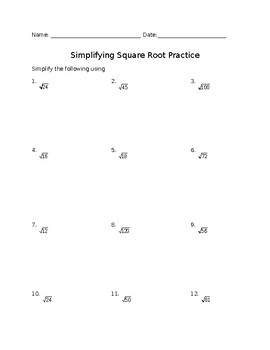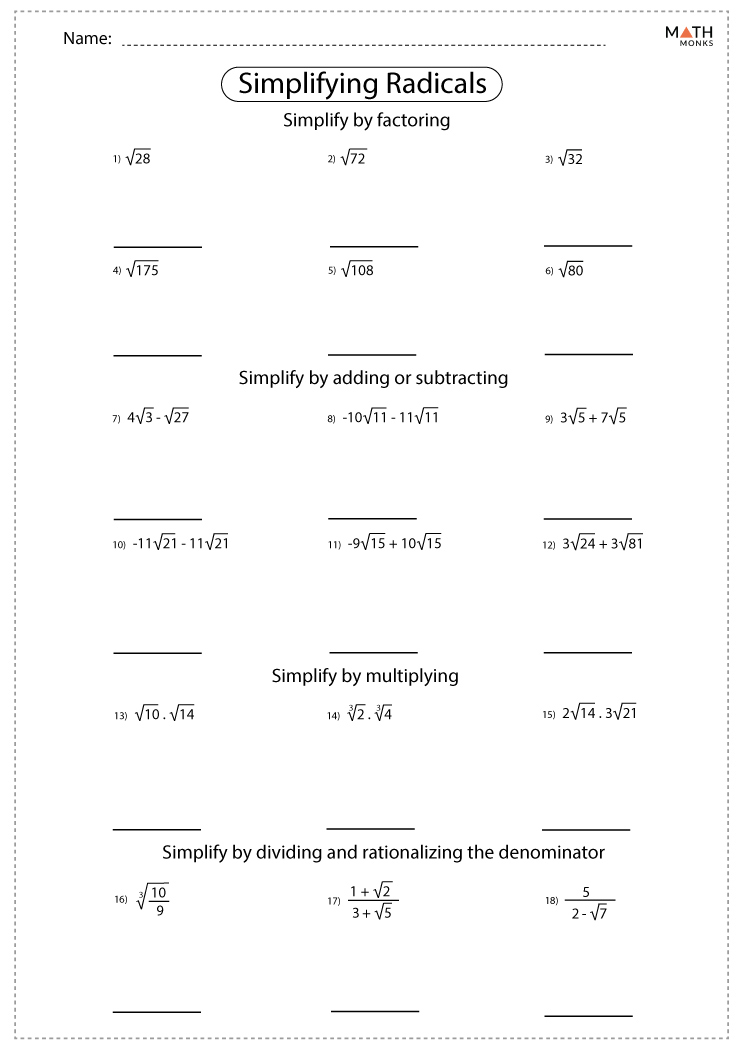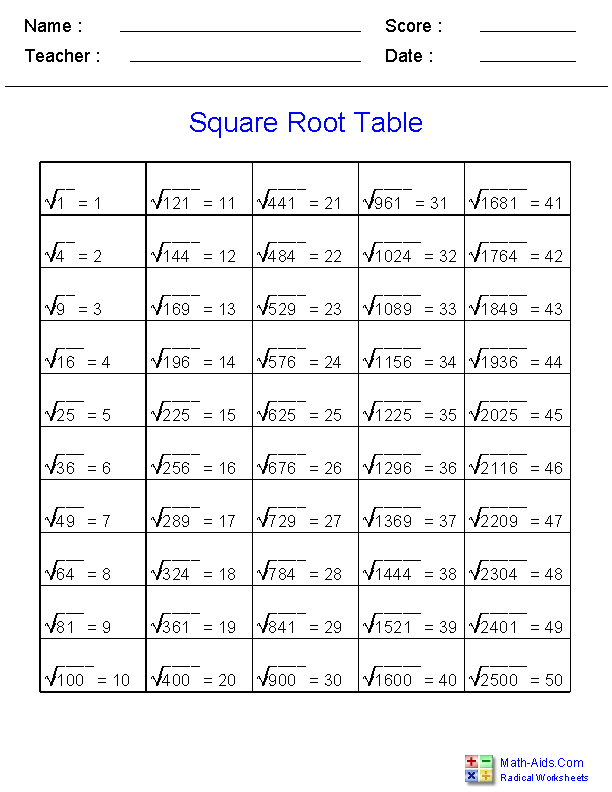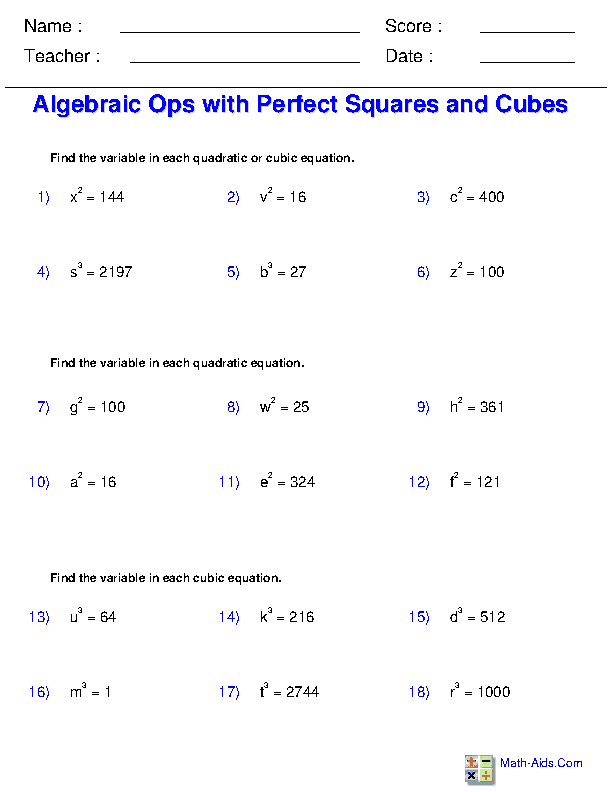Topic simplified square root of 20: Understanding how to simplify the square root of 20 can be incredibly useful for students and math enthusiasts. In this article, we will guide you through the step-by-step process to simplify √20, providing clear explanations and examples to make the concept easy to grasp. Learn the prime factorization method and see how √20 transforms into 2√5 effortlessly.
Table of Content
- Simplified Square Root of 20
- Introduction
- Understanding Square Roots
- Prime Factorization Method
- Long Division Method
- Babylonian Method
- Simplification of √20
- Applications of √20
- Properties of √20
- Visual Representations
- Frequently Asked Questions (FAQs)
- Conclusion
- YOUTUBE: Tìm hiểu cách đơn giản hóa căn bậc hai của 20 qua video Hướng Dẫn Đơn Giản Hóa Căn Bậc Hai Của 20: Sqrt(20) để nắm bắt kiến thức toán học một cách dễ dàng.
Simplified Square Root of 20
The square root of 20 can be simplified by expressing it in its simplest radical form. Here, we present a detailed explanation of the simplification process, along with its applications.
Simplification Process
To simplify the square root of 20, we follow these steps:
- Identify the prime factors of 20: \(20 = 2 \times 2 \times 5\).
- Rewrite the expression under the square root: \( \sqrt{20} = \sqrt{2^2 \times 5} \).
- Apply the property of square roots: \( \sqrt{a \times b} = \sqrt{a} \times \sqrt{b} \).
- Extract the square of 2: \( \sqrt{20} = \sqrt{2^2} \times \sqrt{5} = 2\sqrt{5} \).
Thus, the simplified form of the square root of 20 is \(2\sqrt{5}\).
Decimal Form
The decimal approximation of the square root of 20 is:
\( \sqrt{20} \approx 4.472 \).
Applications and Examples
-
Example 1: Length of a Square's Side
If a square has an area of 20 square units, the length of each side is:
\( \text{Side length} = \sqrt{20} \approx 4.472 \) units.
-
Example 2: Radius of a Circle
If the area of a circle is \(20\pi\) square units, the radius \(r\) is:
\( \pi r^2 = 20\pi \)
\( r^2 = 20 \)
\( r = \sqrt{20} \approx 4.472 \) units.
FAQs
-
Why is the square root of 20 an irrational number?
The square root of 20 is irrational because it cannot be expressed as a simple fraction. This is due to the presence of the prime number 5 under the square root, which does not result in a perfect square.
-
How is the square root of 20 used in real life?
The square root of 20 can be used in various real-life applications, such as finding the dimensions of geometric shapes, solving algebraic equations, and in various scientific calculations.

READ MORE:
Introduction
The simplified square root of 20 is a fundamental mathematical concept that students often encounter. The square root of 20, denoted as √20, can be simplified to 2√5. This process involves breaking down the number 20 into its prime factors and then simplifying the expression under the square root sign. In this section, we will explore the methods to simplify √20, including the prime factorization method and the long division method.
Firstly, understanding that the number 20 can be factored into 2 × 2 × 5 is crucial. Using this, √20 can be expressed as √(2² × 5). By applying the property of square roots that √(a × b) = √a × √b, we get √20 = √(2²) × √5 = 2√5. Thus, the simplified form of √20 is 2√5, which is approximately equal to 4.472.
For a more detailed simplification, the long division method can be employed, which provides a step-by-step approach to finding the square root of non-perfect squares like 20. This method ensures accuracy and helps in understanding the iterative process of reaching the square root value.
Understanding these methods not only helps in simplifying √20 but also builds a strong foundation for simplifying other square roots, enhancing overall mathematical proficiency.
Understanding Square Roots
The square root of a number is a value that, when multiplied by itself, gives the original number. The process of finding the square root is fundamental in various areas of mathematics and is crucial for solving quadratic equations, geometry problems, and more. Understanding how to simplify square roots helps in performing these calculations efficiently.
The square root of 20 can be simplified by breaking it down into its prime factors. Here's a step-by-step explanation:
- Prime Factorization: The number 20 can be expressed as the product of its prime factors: 20 = 2 × 2 × 5.
- Grouping Factors: Group the factors into pairs: (2 × 2) × 5.
- Taking the Square Root: Take the square root of each group. The square root of (2 × 2) is 2, and the square root of 5 remains under the radical sign, as it is not a perfect square.
- Simplifying: Combine the simplified terms: √20 = √(2 × 2 × 5) = 2√5.
Thus, the simplified form of the square root of 20 is 2√5. This method can be applied to simplify other square roots by using the prime factorization technique.
It's important to note that the value of √20 is approximately 4.472 when calculated numerically, but in its simplest radical form, it is represented as 2√5.
Prime Factorization Method
The prime factorization method is a systematic way to simplify the square root of a number by breaking it down into its prime factors. Here, we will use this method to simplify the square root of 20 step by step.
- Find the prime factors of 20.
- 20 = 2 × 2 × 5
- Group the factors in pairs.
- 20 = 22 × 5
- Take one number from each pair out of the square root.
- √20 = √(22 × 5)
- Simplify the expression.
- √20 = 2√5
- Express the simplified form.
- √20 = 2√5
The number 20 can be factorized into prime factors as follows:
Identify pairs of the same number among the factors:
For the pair of 2's, we take one 2 out of the square root:
Pull out the pairs from under the radical sign:
Thus, the simplified form of √20 is:
By following these steps, you can simplify the square root of any non-perfect square number using the prime factorization method. This technique is useful for understanding and calculating square roots without the need for a calculator.
Long Division Method
The long division method is a systematic way to find the square root of a number, which involves a series of steps to obtain an accurate value. Here is a detailed step-by-step process to find the square root of 20 using the long division method:
Step 1: Group the digits of the number in pairs, starting from the decimal point to the left and right. For the number 20, we consider it as 20.0000 for simplicity.
Step 2: Find the largest number whose square is less than or equal to the first group (in this case, 20). This number is 4 because 42 = 16, which is less than 20.
Step 3: Subtract the square of the chosen number (16) from the first group (20) to get the remainder. Bring down the next pair of digits (00) next to the remainder, making it 400.
Step 4: Double the divisor (4), making it 8. Find a digit (x) such that when 8x is multiplied by x, the product is less than or equal to the new dividend (400). The suitable digit here is 4 because 84 × 4 = 336.
Step 5: Subtract 336 from 400 to get the remainder (64). Bring down the next pair of zeros (00), making it 6400.
Step 6: Double the current quotient (44) to get 88. Find a digit (y) such that when 88y is multiplied by y, the product is less than or equal to 6400. The suitable digit here is 7 because 887 × 7 = 6209.
Step 7: Subtract 6209 from 6400 to get the remainder (191). Bring down the next pair of zeros (00), making it 19100.
Step 8: Repeat the process to get the next digit of the quotient. Continue this process to achieve the desired level of accuracy.
Following these steps, we find that the square root of 20 is approximately 4.472135. This method ensures precision and helps in understanding the calculation process without a calculator.
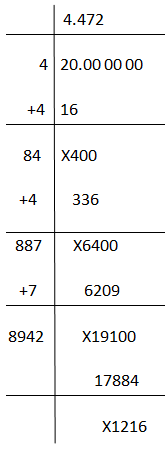
Babylonian Method
The Babylonian method, also known as Heron's method, is an ancient algorithm to find the square root of a number. This iterative method starts with an initial guess and refines it step by step to approach the true square root.
Let's apply the Babylonian method to simplify the square root of 20.
- Start with an initial guess, \( x_0 \). For simplicity, let's choose \( x_0 = 5 \).
- Calculate the next approximation using the formula: \[ x_{n+1} = \frac{1}{2} \left( x_n + \frac{S}{x_n} \right) \] where \( S \) is the number for which we want to find the square root (in this case, \( S = 20 \)).
- Substitute \( x_0 \) into the formula to get the next guess: \[ x_1 = \frac{1}{2} \left( 5 + \frac{20}{5} \right) = \frac{1}{2} \left( 5 + 4 \right) = \frac{9}{2} = 4.5 \]
- Repeat the process with \( x_1 = 4.5 \): \[ x_2 = \frac{1}{2} \left( 4.5 + \frac{20}{4.5} \right) = \frac{1}{2} \left( 4.5 + 4.444 \right) = \frac{8.944}{2} = 4.472 \]
- Continue this iteration until the value stabilizes. After a few iterations, we find: \[ x_3 = 4.4721 \]
- The approximation stabilizes around \( 4.4721 \), which is a close approximation of the square root of 20.
Using the Babylonian method, we have simplified the square root of 20 to approximately \( 4.4721 \). This method is powerful due to its rapid convergence, often providing accurate results in just a few iterations.
Simplification of √20
The square root of 20 can be simplified using the prime factorization method. Here’s a step-by-step guide to simplify √20:
- First, express 20 as a product of its prime factors:
20 = 2 × 2 × 5 20 = 22 × 5 - Next, apply the square root to each factor:
\(\sqrt{20} = \sqrt{2^2 \times 5}\)
- Take out the square root of any perfect squares from under the radical:
\(\sqrt{2^2 \times 5} = 2\sqrt{5}\)
Therefore, the simplified form of \(\sqrt{20}\) is \(2\sqrt{5}\).
In decimal form, this is approximately equal to 4.472.
- \(\sqrt{20} \approx 4.472\)
Applications of √20
The square root of 20, expressed as 2√5 or approximately 4.472, has various practical applications in real-world scenarios and mathematical contexts. Below are some notable applications:
-
Geometric Applications
- Area of a Square: If you have a square with an area of 20 square units, the side length of the square is √20, approximately 4.472 units.
- Diagonal of a Rectangle: In a rectangle where the sides are 2 units and 2√5 units, the diagonal can be found using the Pythagorean theorem as √(2² + (2√5)²) = √(4 + 20) = √24 = 2√6, showing the relationship between different square roots.
-
Measurement and Construction
- Length Measurement: When measuring lengths, √20 can be used to approximate the length of a diagonal in construction projects where precise measurements are crucial, such as in tiling or laying out furniture.
- Engineering: Engineers often use square roots to calculate stresses and forces. √20 can appear in calculations involving natural frequencies, wave speeds, and other dynamic properties.
-
Physics and Astronomy
- Wave Mechanics: In physics, especially in wave mechanics, √20 can be used to describe relationships in wave speed, frequency, and wavelength where the value appears in equations for simplicity or approximation.
- Astronomical Calculations: When calculating distances in space, the square root of non-square numbers like 20 can be part of the process for determining orbital mechanics or distances between celestial objects.
-
Mathematical Problems
- Simplifying Radicals: √20 often appears in algebra where students learn to simplify radicals. Understanding its simplification to 2√5 helps in solving equations and understanding properties of numbers.
- Numerical Methods: Approximating values like √20 is essential in numerical methods where iterative techniques are used to find square roots and other roots, enhancing computational accuracy.
Properties of √20
The square root of 20, expressed as √20 or 2√5 in its simplest radical form, possesses several interesting mathematical properties:
- Irrational Number: √20 is an irrational number. This means it cannot be expressed as a simple fraction of two integers. This is because its prime factorization, 2² × 5, includes 5 raised to an odd power, making it impossible to pair all factors into perfect squares.
- Approximate Value: The approximate decimal value of √20 is 4.47213595499958. This value is non-repeating and non-terminating, which is characteristic of all irrational numbers.
- Prime Factorization: Using the prime factorization method, we simplify √20 by breaking it down into √(4×5) = 2√5. This is the simplest radical form.
- Product Rule: The product rule of square roots states that √(a×b) = √a × √b. Applying this to √20, we get √(4×5) = √4 × √5 = 2√5.
- Quotient Rule: Similarly, the quotient rule for square roots is used for dividing under the radical, which can be useful in various mathematical operations involving √20.
- Behavior in Equations: In equations, √20 often appears in problems involving areas, such as calculating the side length of a square with an area of 20 square units. For example, if the area is 20 square units, the side length is √20 units.
- Graphical Representation: On a number line, √20 lies between 4 and 5, closer to 4.5. Graphically, it helps in visualizing and comparing the size of irrational numbers.
These properties of √20 make it a valuable concept in various mathematical contexts, from simplifying radicals to solving real-world problems involving measurement and geometry.

Visual Representations
Visual representations of the square root of 20 help in understanding its value and properties more intuitively. Here are some effective methods:
- Number Line Representation:
On a number line, √20 lies between the perfect squares of 16 and 25. It is slightly less than √25 (which is 5) and slightly more than √16 (which is 4). You can approximate √20 to be around 4.47.

- Geometric Representation:
Visually, you can represent √20 by constructing a square with an area of 20 square units. The side length of this square will be √20. If perfect squares are constructed with side lengths of 4 and 5, the square with side length √20 will be between these two squares.

- Manipulatives and Area Models:
Using manipulatives, such as algebra tiles, you can build a square area model. If you create a square with an area of 16 (4x4) and another with 25 (5x5), the square root of 20 will be shown by creating an intermediate square that fits between these two models.

- Graphical Plots:
Graphing y=√x on a coordinate plane and highlighting the point where x=20 can visually show the value of √20. This point on the curve helps in understanding its exact position and value compared to other square roots.

These visual methods provide a clearer understanding of the square root of 20, illustrating its position and value between known perfect squares.
Frequently Asked Questions (FAQs)
Common queries about the square root of 20 and their detailed answers.
-
What is the value of the square root of 20?
The square root of 20 is approximately 4.472135955. In its simplest radical form, it is written as \(2\sqrt{5}\).
-
Why is the square root of 20 an irrational number?
The square root of 20 is irrational because 20 can be factored into \(2^2 \times 5\). The factor 5 is not a perfect square and cannot be paired off, resulting in an irrational number \(2\sqrt{5}\).
-
What is the square root of 20 in simplest radical form?
The square root of 20 in simplest radical form is \(2\sqrt{5}\). This is derived by breaking down 20 into its prime factors and simplifying.
-
Is the number 20 a perfect square?
No, 20 is not a perfect square. When factored, it does not result in pairs of prime factors that would indicate a perfect square. Therefore, its square root is not an integer.
-
How can the square root of 20 be calculated using the long division method?
The long division method involves a series of steps to find the square root of 20 with increasing precision. The result converges to approximately 4.472135955.
-
Can the square root of a negative number be real?
The square root of a negative number is not a real number. For example, \(\sqrt{-20}\) is an imaginary number and can be written as \(2i\sqrt{5}\).
Conclusion
Understanding the simplified square root of 20, which is \(2\sqrt{5}\), involves a blend of mathematical techniques and applications. Throughout this exploration, we have delved into various methods to compute and simplify \(\sqrt{20}\), including prime factorization, long division, and the Babylonian method. Each method provides unique insights and approaches to handling square roots, emphasizing the richness of mathematical problem-solving.
By expressing \(\sqrt{20}\) as \(2\sqrt{5}\), we gain a clearer perspective on its properties, particularly its classification as an irrational number. This simplified form not only aids in theoretical mathematics but also finds practical applications in fields such as geometry and physics, where precise calculations are crucial.
The journey through the simplification of \(\sqrt{20}\) has showcased the importance of both analytical and numerical methods in mathematics. Whether through visual representations, practical examples, or rigorous calculations, understanding the square root of 20 enriches our mathematical knowledge and problem-solving skills.
In conclusion, the square root of 20, simplified as \(2\sqrt{5}\), serves as an excellent example of the beauty and complexity of mathematics. Its study enhances our appreciation for mathematical concepts and their applications in the real world. By mastering these techniques, we not only solve specific problems but also develop a deeper understanding of the mathematical principles that govern the world around us.
Tìm hiểu cách đơn giản hóa căn bậc hai của 20 qua video Hướng Dẫn Đơn Giản Hóa Căn Bậc Hai Của 20: Sqrt(20) để nắm bắt kiến thức toán học một cách dễ dàng.
Cách Đơn Giản Hóa Căn Bậc Hai Của 20: Sqrt(20)
READ MORE:
Khám phá cách đơn giản hóa căn bậc hai của 20 qua video Đơn Giản Hóa Căn Bậc Hai Của 20 để hiểu rõ hơn về toán học.
Đơn Giản Hóa Căn Bậc Hai Của 20


